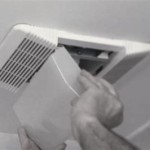Installing Bathroom Vanity Pipes: A Comprehensive Guide to Floor Connections
Installing the plumbing for a bathroom vanity, particularly the connection to floor pipes, requires careful planning, precision, and adherence to local plumbing codes. This article provides a detailed guide on the process, covering essential tools, preparation steps, installation techniques, and troubleshooting tips to ensure a successful and leak-free installation. Understanding the complexities of bathroom plumbing, including the correct fittings, pipe materials, and sealing methods, is crucial for homeowners embarking on this project.
Before commencing any plumbing work, it is imperative to consult local building codes and regulations. These codes dictate the types of materials permitted, the required pipe sizes, and inspection procedures. Failing to comply with these regulations can result in costly rework and potential safety hazards. It's also wise to obtain necessary permits before starting any plumbing alterations.
Key Point 1: Preparation and Material Gathering
Proper preparation is fundamental to a smooth and efficient vanity pipe installation. This phase encompasses gathering the necessary tools and materials, accurately measuring the existing plumbing configuration, and shutting off the water supply to the bathroom.
The required tools typically include: pipe wrenches, adjustable wrench, pliers, a pipe cutter or hacksaw, measuring tape, level, Teflon tape, pipe joint compound (also known as pipe dope), safety glasses, and gloves. Depending on the type of pipe and fittings being used, additional tools like a propane torch for soldering copper pipes or a crimping tool for PEX pipes may be necessary.
Materials needed will vary based on the existing plumbing and the vanity being installed. Common materials include: PVC or ABS pipes (depending on local codes), copper pipes (often used for hot and cold water supply lines), PEX pipes (a flexible plastic alternative), various fittings (elbows, tees, couplings, adapters), shut-off valves, supply lines (flexible or rigid), drain pipes, P-trap, tailpiece, and a vanity mounting bracket (if required).
Accurate measurements are critical. Carefully measure the distance from the existing floor pipes to the vanity’s drain and water supply connections. Note the diameter of the existing pipes and the required diameter for the vanity connections. These measurements will determine the length and type of pipes and fittings needed. It’s generally advisable to add a bit of extra length to the pipes during the initial cut; it's easier to shorten a pipe than to lengthen it. A detailed sketch of the existing and proposed plumbing layout is highly recommended.
Before commencing any physical work, shut off the water supply to the bathroom at the main shut-off valve. This is generally located in the basement, garage, or near the water meter. Open the bathroom faucet to relieve any residual pressure in the pipes. Place towels or buckets under the work area to catch any remaining water.
Key Point 2: Installation Procedure for Floor Connections
The installation process involves connecting the vanity drain and water supply lines to the existing floor pipes. This often requires cutting, fitting, and securing pipes to ensure a watertight and code-compliant installation.
Begin by dry-fitting all the pipes and fittings before applying any cement or solder. This allows for adjustments and ensures that the components fit together correctly. Check the alignment and ensure that the pipes are properly supported. The P-trap, a U-shaped pipe designed to trap debris and prevent sewer gases from entering the bathroom, is a critical component of the drain line. Ensure the P-trap is positioned correctly and accessible for cleaning.
For PVC or ABS pipes, clean the pipe ends and the inside of the fittings with a primer. Apply a generous amount of PVC or ABS cement to both surfaces and quickly join the components, twisting slightly to ensure even distribution of the cement. Hold the joint firmly for a few seconds to allow the cement to set. Excess cement should be wiped away to prevent weakening the joint. Allow sufficient drying time as specified by the cement manufacturer before applying water pressure. It is advisable to wear gloves during this process, as the primer and cement can irritate skin.
For copper pipes, clean the pipe ends and the inside of the fittings with a wire brush or emery cloth to remove any oxidation. Apply a thin layer of soldering flux to the surfaces. Heat the fitting with a propane torch until the flux starts to bubble. Touch the solder to the joint where the pipe and fitting meet. The solder should melt and be drawn into the joint by capillary action. Remove the heat and allow the joint to cool naturally. Avoid moving the joint while it is cooling. Clean the joint with a damp cloth to remove any excess flux. Copper plumbing requires experience and caution due to the use of an open flame. If unfamiliar with soldering techniques, consider hiring a qualified plumber.
For PEX pipes, insert the PEX pipe into the fitting until it reaches the stop. Use a crimping tool to crimp the fitting, creating a secure and watertight connection. Ensure the crimp is positioned correctly and is within the manufacturer's specifications. Inspect the crimp for any signs of damage or defects. PEX plumbing offers flexibility and ease of installation, making it a popular choice for DIY projects.
Once the drain and water supply lines are connected, install shut-off valves on the water supply lines. These valves allow you to isolate the water supply to the vanity for future repairs or maintenance without shutting off the water to the entire house. Wrap Teflon tape around the threads of the valve before screwing it into the pipe. Apply pipe joint compound sparingly over the Teflon tape for an additional layer of protection against leaks.
Connect the vanity’s drain tailpiece to the P-trap using a slip joint connection. Ensure the slip joint washers are properly positioned and tightened to prevent leaks. Connect the water supply lines to the faucet tailpieces using flexible or rigid supply lines. Again, wrap Teflon tape around the threads before making the connections. Ensure all connections are snug, but avoid overtightening, which can damage the fittings.
Key Point 3: Leak Testing and Finishing Touches
After completing the installation, leak testing is crucial to ensure a watertight system. This step involves carefully inspecting all connections while running water through the drain and water supply lines.
Slowly turn on the water supply to the bathroom and check all connections for leaks. Start with a low flow rate and gradually increase the pressure. Carefully inspect each joint and connection for any signs of water dripping or seeping. Pay close attention to the connections on the P-trap, shut-off valves, and faucet tailpieces. If any leaks are detected, immediately turn off the water supply and tighten the connection or repair the joint as necessary.
If a leak persists after tightening the connection, disassemble the joint and inspect the components for damage or defects. Replace any damaged washers, O-rings, or fittings. Reapply Teflon tape and pipe joint compound to ensure a proper seal. In some cases, it may be necessary to cut and replace a section of pipe if the leak cannot be resolved.
After verifying that there are no leaks, secure the pipes to the wall or floor using pipe straps or clamps. This will prevent the pipes from moving or vibrating, which can lead to leaks over time. Ensure the pipes are properly supported and are not putting undue stress on any connections. Ensure the drain pipe has adequate slope toward the main drain line to facilitate proper drainage. A minimum slope of ¼ inch per foot is generally recommended.
Finally, clean up the work area and dispose of any waste materials properly. Inspect the vanity and surrounding area for any signs of damage or spills. Ensure the vanity is securely mounted to the wall or floor according to the manufacturer’s instructions. With the plumbing installation complete and leak-free, the vanity installation can be finalized with the countertop and faucet installation.
Properly installed bathroom vanity pipes contribute to the functionality and longevity of the bathroom. Diligence in adhering to local plumbing codes, meticulous preparation, accurate measurements, and cautious installation practices are all integral to obtaining a successful and reliable plumbing system. If doubt arises during the process, seeking help from a licensed plumber is always the safest course of action.

Can I Install Bathroom Vanity Plumbing Through The Floor Loo Academy Under Sink Moving

How To Install A Freestanding Bathroom Vanity Cherished Bliss

Boxing In Bathroom Pipework Guru

How To Install A Bathroom Vanity

5 Ways To Conceal A Waste Pipe Under Vanity The Plumbette

How To Fit A Bathroom Sink Diy Guides Victorian Plumbing

Bathroom Sink Plumbing Installation Diy Montreal

How To Install A Bathroom Vanity

This Image To Show The Full Size Version Sink Plumbing Kitchen Diy

Here S How Install A Bathroom Pedestal Sink
Related Posts







